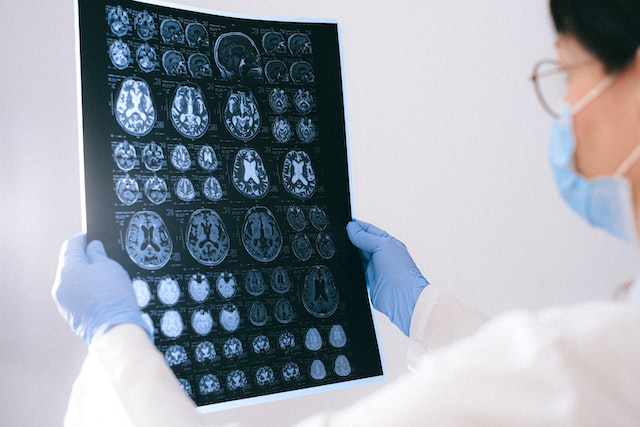
Two studies examine results with two powerful MRI approaches.
Extensive research has been done with neuroimaging methods in people with AN. Much of this work has focused on two areas. Older studies used simple structural imaging methods to look at changes in brain volume when people were at a low weight; these studies have often shown reductions in brain volume. More recently, functional magnetic resonance imaging (fMRI) studies have examined brain activity in a brain region (or in brain circuits), either while an individual is at rest or performing a task. Recent research expanding into use of newer neuroimaging methods is providing more detail. Two recently published studies provide excellent examples.
A study with very-high-field MRI
First, Pappaianni and colleagues (Sci Rep. 2022. 16:2589) described their pilot study using very-high-field MRI to look at detailed measures of the amount of myelination in white matter. In this study, 7 people with AN and 9 healthy comparison participants were studied using a 7-Tesla MRI scanner that allowed detailed measurement of the amount of myelin (the Tesla designation measures the strength of the magnet used in the MRI).The results showed less myelin in those with AN; the authors note that they could not tell if this played a role in developing AN or was a result of it. [The FDA approved the very-high-field MRI system in late 2017.]
DWI: a different, powerful tool
A second study used a different powerful technique to study brain function. Dr. Daniel Geisler of Techniechnische Universität Dresden, Dresden, Germany, and his colleagues used diffusion weighted imaging (DWI) to study the brains of young men (mean age: 16.3 years) acutely ill with anorexia nervosa (J Am Acad Child Adolesc Psychiatry. 2022. 61:331).
DWI approaches measure the diffusion of water molecules within neurons to create images of neural tracts in the brain, and thus can show whether tract architecture is normal or abnormal, and whether connectivity in those areas is lower or higher. Limited prior studies have used this powerful technique in those with AN, with mixed findings. In this large study (96 adolescents with AN and 96 matched controls), DWI was used to examine these tracts, or connections, across the entire brain.
The results showed significantly different connectivity in those with AN than in the controls. In three regions of the brain, it showed stronger connections, and in three other regions the authors observed what appeared to be diminished connections. Just as Pappaianni and colleagues’ study found, the German researchers could not specify whether the changes they observed might result from AN or might predispose the patient to it.
Taken together, these studies suggest that continued use of more powerful neuroimaging techniques will tell us in ever-greater detail about brain changes associated with AN.

